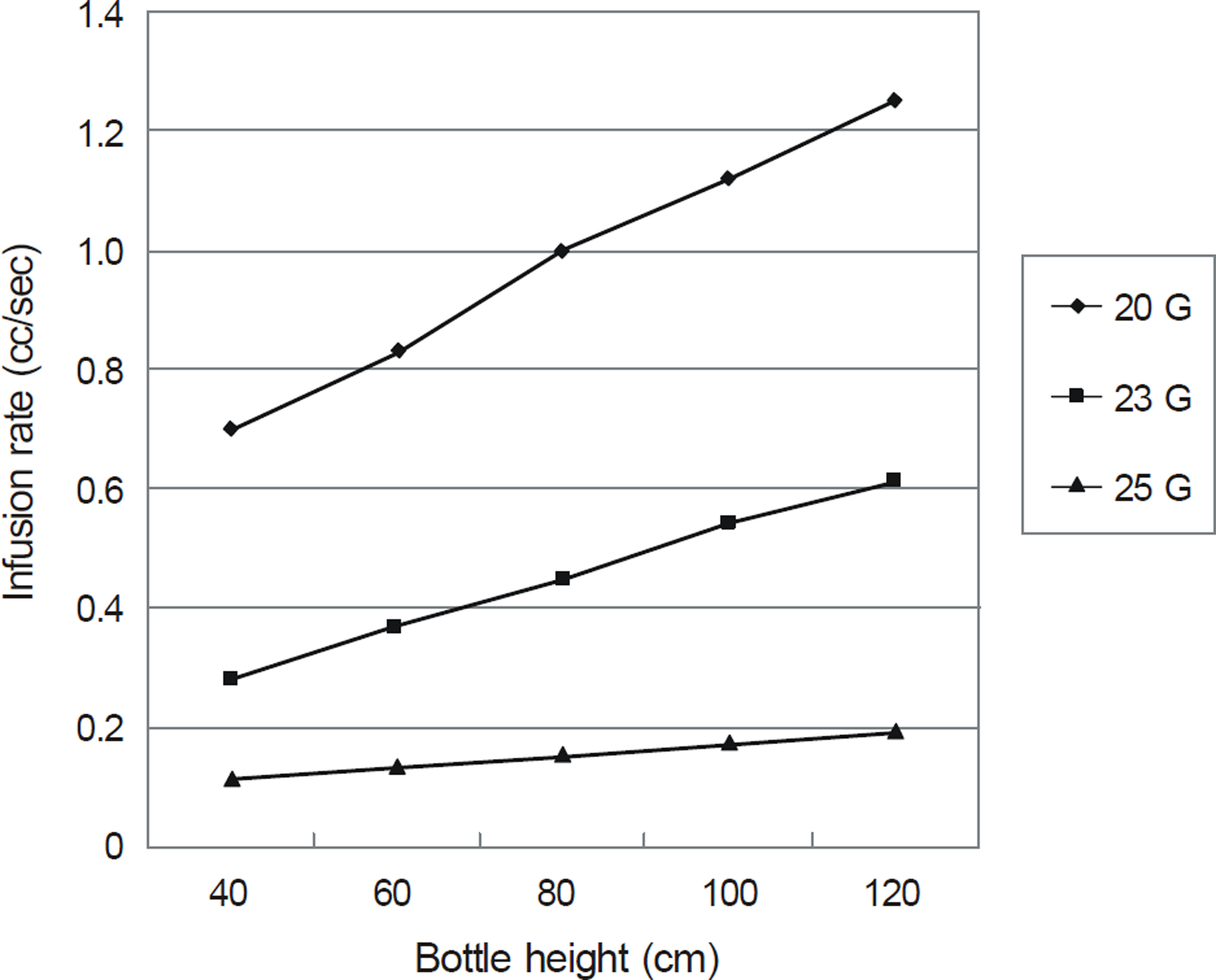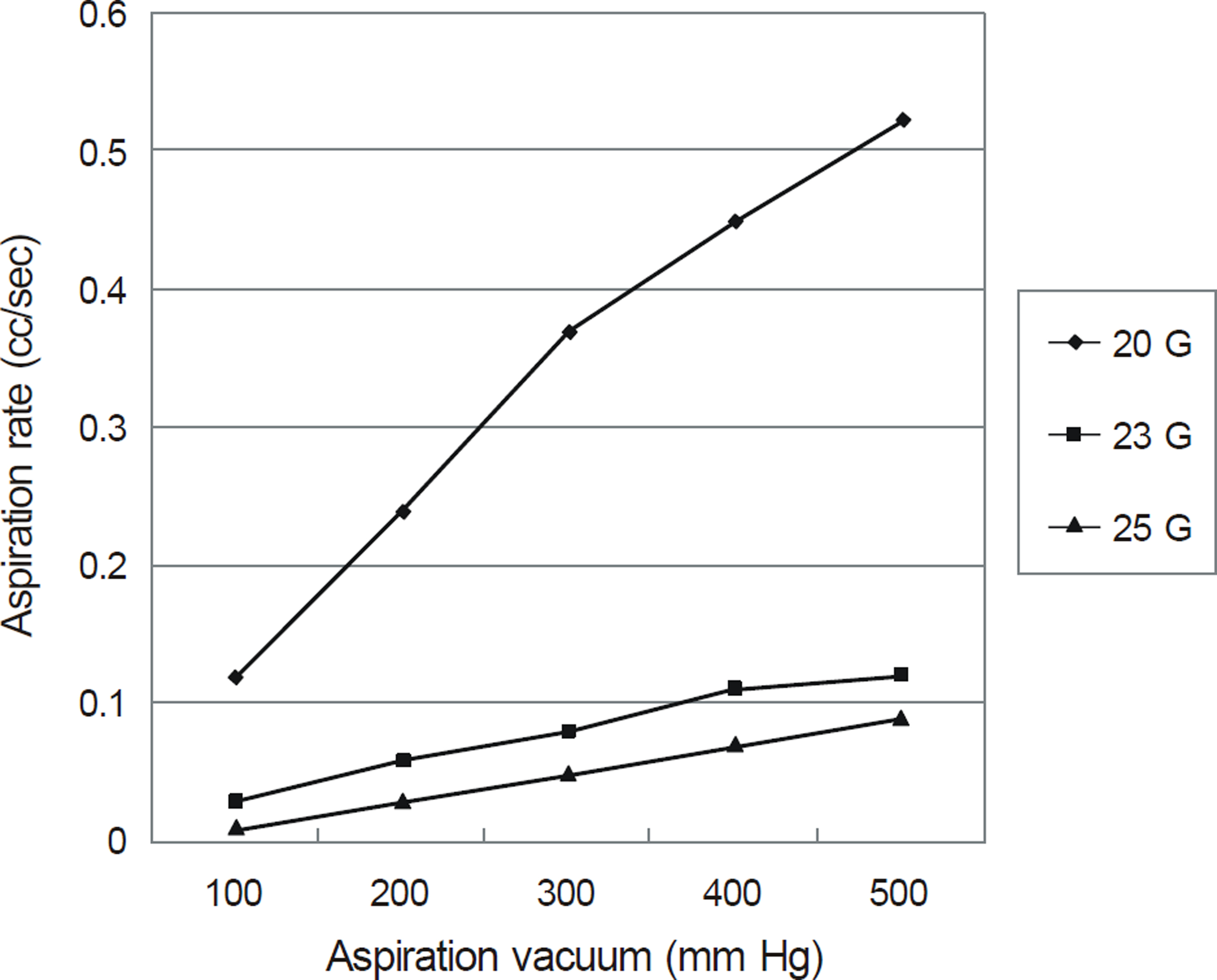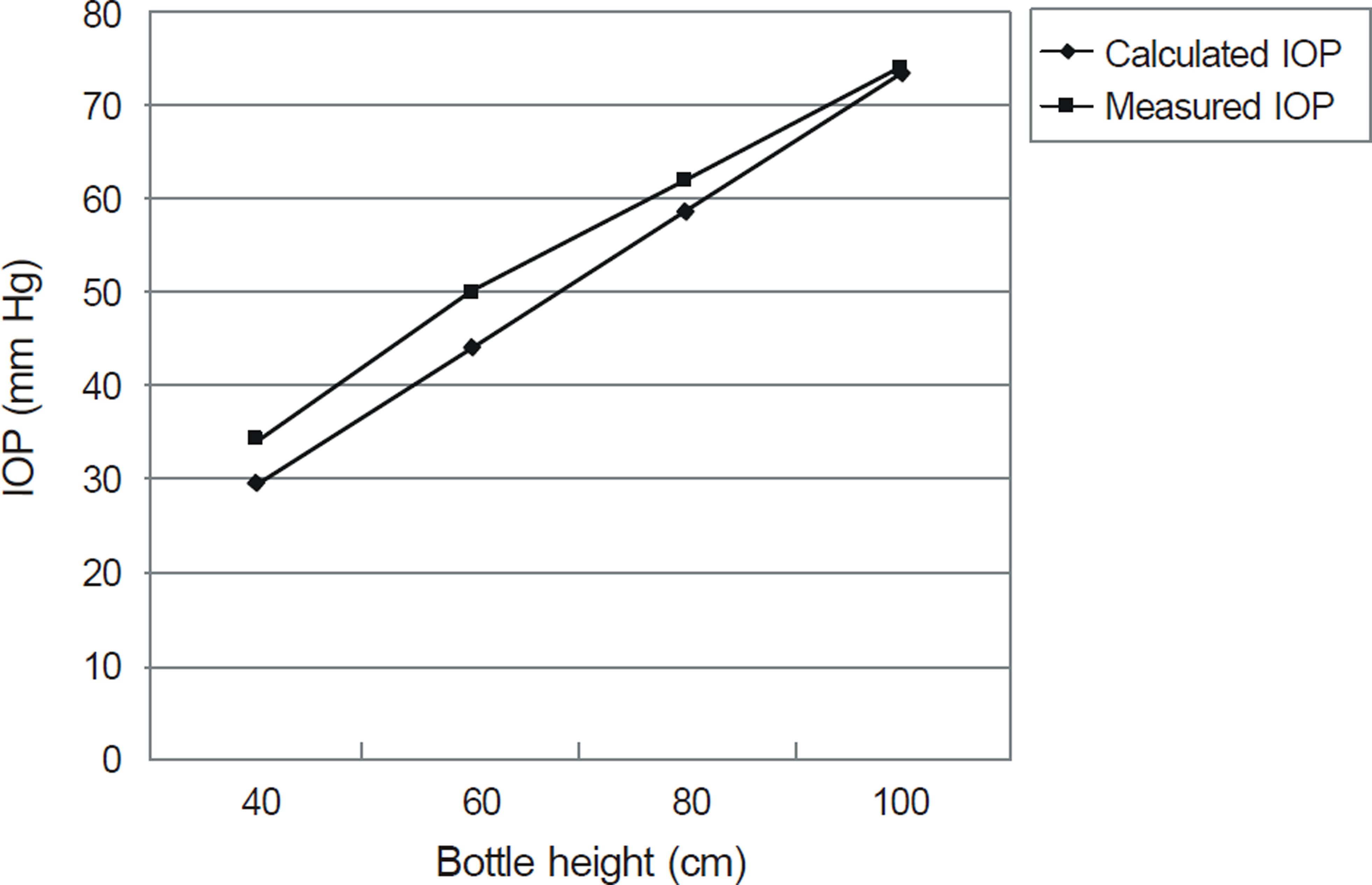J Korean Ophthalmol Soc.
2013 Aug;54(8):1236-1240.
Comparison of 20, 23 and 25 Gauge Vitreoretinal Surgical Instruments
- Affiliations
-
- 1Department of Ophthalmology, Kim's Eye Hospital, Konyang University College of Medicine, Myung-Gok Eye Research Institute, Seoul, Korea. han66139@kimeye.com
Abstract
- PURPOSE
To investigate the diameter, the infusion and aspiration rate of 20-, 23- and 25-gauge vitreous cutters, and compare the theoretical and practical intraocular pressure (IOP) change according to the height of the bottle.
METHODS
A vitreous cutter was disassembled to measure the actual external and internal diameter. The infusion rate was measured at the height of 40, 60, 80, 100 and 120 cm and the suction rate was measured at a pressure of 100, 200, 300, 400 and 500 mm Hg for each gauge. IOP during the operation was calculated according to the bottle height and the actual IOP was measured using a mercury sphygmomanometer.
RESULTS
The external diameter of the 20-, 23- and 25-gauge was 900, 596, and 500 mm, respectively, and the internal diameter was 670, 450, and 380 mm, respectively. The infusion rate increased in direct proportion to the bottle height. The aspiration rate increased as the pressure increased. However, the increment of the infusion and aspiration rate in the 20-gauge vitreous cutter was the highest and decreased in the 23- and 25-gauge, in that order. IOP was calculated as 29, 44, 59 and 74 mm Hg when the bottle height was at 40, 60, 80 and 100 cm, respectively, and was measured 34, 50, 62 and 74 mm Hg, respectively.
CONCLUSIONS
The infusion and aspiration rates per outer diameter in the 23- and 25-gauge vitreous cutters and infusions using cannula were lower than in the 20-gauge vitreous cutter. The difference of the infusion and aspiration rates per diameter between the 23- and 25-gauge vitreous cutters and infusions was not significant.
Keyword
Figure
Reference
-
References
1. Fujii GY, De Juan E Jr, Humayun MS. . A new 25-gauge instru-ment system for transconjunctival sutureless vitrectomy surgery. Ophthalmology. 2002; 109:1807–12.2. Eckardt C. Transconjunctival sutureless 23-gauge Vitrectomy. Retina. 2005; 25:208–11.
Article3. de Juan E Jr, Hickingbotham D. Refinements in microinstrumentation for vitreous surgery. Am J Ophthalmol. 1990; 109:218–20.
Article4. Hubschman JP. [Comparison of different vitrectomy systems.]. J Fr Ophtalmol. 2005; 28:606–9.5. Romero P, Salvat M, Almena M. . [Experience with 25-gauge transconjunctival vitrectomy compared to a 20-gauge system. Analysis of 132 cases.] J Fr Ophtalmol. 2006; 29:1025–32.6. Spirn MJ. Comparison of 25, 23 and 20-gauge vitrectomy. Curr Opin Ophthalmol. 2009; 20:195–9.
Article7. Thompson JT. Advantages and limitations of small gauge vitrectomy. Surv Ophthalmol. 2011; 56:162–72.
Article8. Kim SH, Choi KS. Changes of intraocular pressure during experimental vitrectomy. Curr Eye Res. 2012; 37:698–703.
Article9. Haas A, Seidel G, Steinbrugger I. . Twenty-three-gauge and 20-gauge vitrectomy in epiretinal membrane surgery. Retina. 2010; 30:112–6.
Article
- Full Text Links
- Actions
-
Cited
- CITED
-
- Close
- Share
- Similar articles
-
- Initial Experience With 20-Gauge Transconjunctival Sutureless Vitrectomy Using Conventional Instruments
- Comparison of Silicone Oil Removal Using 23-Gauge and 20-Gauge System for Pars Plana Vitrectomy
- Comparison of Efficacy and Safety between Transconjunctival 23-Gauge and Conventional 20-Gauge Vitrectomy Systems in Macular Surgery
- A Combination of 23-gauge and 20-gauge Transconjunctival Sutureless Vitrectomy
- The 23-Gauge Sutureless Vitreoretinal Surgery in Previously Vitrectomized Eyes






